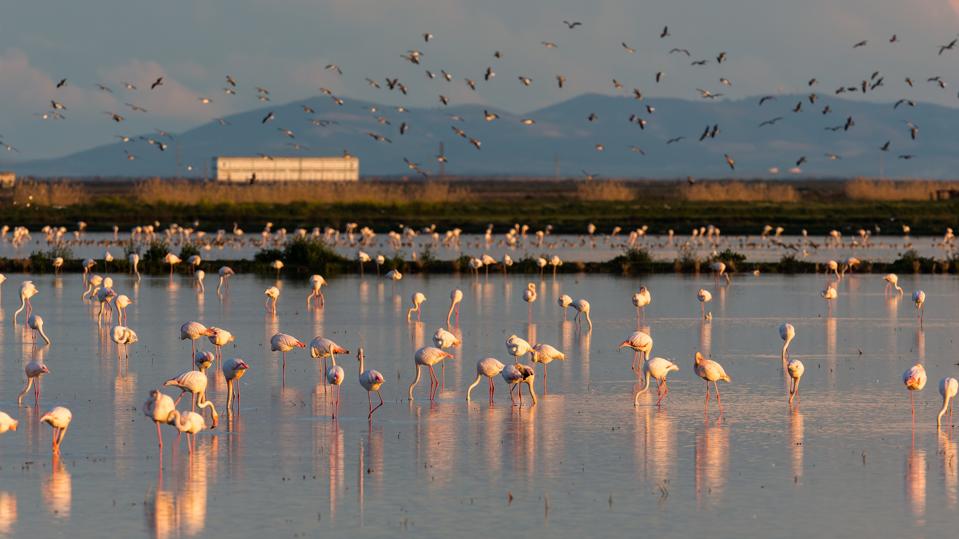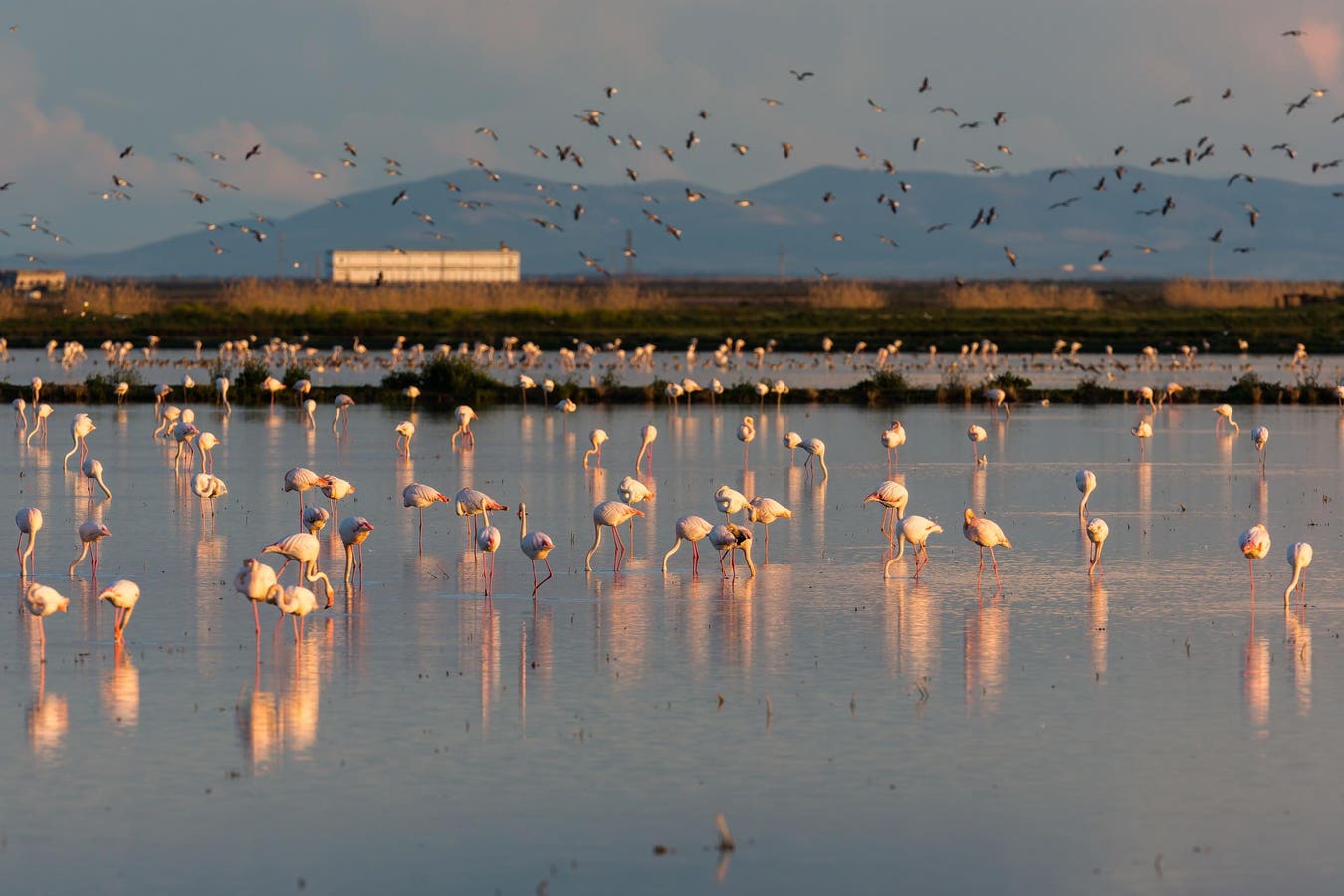
Doñana National Park was designated a UNESCO World Heritage Site in 1994.
getty
Equipped with storied cities like Valencia, Málaga and Barcelona, Spain’s Mediterranean coast has earned worldwide acclaim for its picturesque beaches and dazzling architecture—but it’s not just people that call this sprawling region home. In the western reaches of Andalusia, Doñana National Park serves as one of the most crucial wildlife refuges in all the nation, playing host to a staggering array of bird and mammal species across its many marshes. From migratory waders to one of Western Europe’s most elusive predators, this world-renowned preserve offers one of the richest mosaics of flora and fauna found anywhere in Spain.
While Doñana National Park boasts several hundred bird species throughout the year, the refuge is perhaps best known for its waders, with a wealth of eye-catching animals found feasting across its wetlands. One of its most notable residents is the greater flamingo, with thousands of the birds congregating each year alongside other common sights like the white stork and squacco heron. In addition to wading birds, autumn visitors should also keep an eye out for raptors, with species like the European honey buzzard and Egyptian vulture appearing during migration season—but in terms of sought-after species, it’s tough to beat the Spanish imperial eagle, a striking bird of prey that’s endemic to the Iberian Peninsula.
The Iberian lynx is one of four extant lynx species.
getty
Beyond birdlife, Doñana National Park is also renowned as a safe haven for one of the earth’s rarest wild cats—the Iberian lynx. Once teetering on the edge of extinction, this elusive feline has surged in numbers in recent decades thanks to ambitious conservation efforts across the country, with Andalusia serving as a crucial stage for their recovery. Though still notoriously difficult to spot today, the possibility of seeing one of Spain’s most iconic creatures in the flesh acts as a major draw for both domestic and international tourists.
While the Iberian lynx is certainly one of Doñana National Park’s most lauded residents, it’s far from the only mammal that can be encountered during a visit. On the smaller side, the preserve plays host to mustelids like the European polecat and least weasel, while red foxes have proliferated across the region thanks to the absence of the gray wolf, a predator that’s been entirely extirpated from Andalusia. And in addition to its many mammals, the preserve is also prime territory for Spain’s many reptile species, with residents spanning from the spur-thighed tortoise—a Mediterranean species that’s renowned for its long lifespan—to the Carbonell’s wall lizard, a small animal that’s endemic to the Iberian Peninsula.
The Spanish imperial eagle is a close relative of the eastern imperial eagle.
getty
Spain draws visitors in droves each year with its vibrant culture, but for those hoping to gain some insight into the fascinating flora and fauna that call the country home, few destinations can compare to Doñana National Park. While migration season holds plenty of promise for visiting birdwatchers, it also doubles as a top spot for catching a glimpse of one of the nation’s most iconic cat species—and that’s just scratching the surface of all that the park has to offer. As you plan your next ecotourism-focused foray into Western Europe, don’t miss out on this captivating corner of Andalusia, with native birds, mammals and reptiles all thriving across its boundaries as they have for thousands of years.
